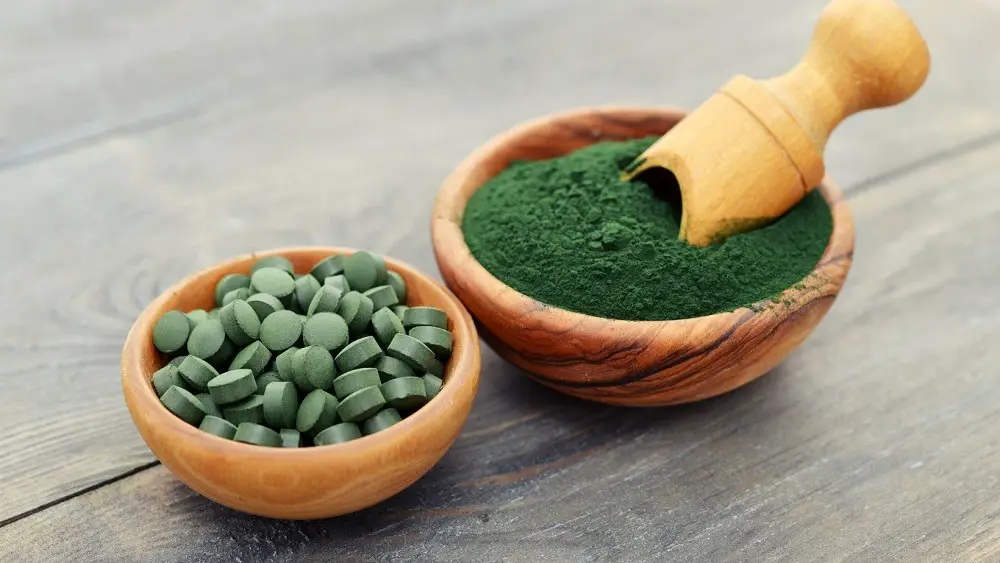We all know the benefits of leafy greens such as spinach and kale, and, while these are full of vitamins and nutrients, what about the other superfoods out there?
Wheatgrass and spirulina are two of the top superfoods and are packed full of the good stuff. These are two of the most nutrient-dense foods you can nourish your body with, and today we’re going to be delving into their benefits…

Wheatgrass
Wheatgrass is one of the plants that health enthusiasts have been raving about for years, and it’s easy to see why. It’s used both as an everyday health tonic and may even be beneficial at treating specific diseases – though more research needs to be carried out to determine its efficacy.
Regardless, wheatgrass has a myriad of benefits. It comes from the Triticum aestivum plant and is one of the best sources of chlorophyll available. It’s grown from wheat seeds, but contains no gluten and is considered a sprout or young grass of the plant.
Benefits of Wheatgrass
Wheatgrass is one of nature’s multivitamins – it’s one of the richest sources of vitamins A and C and is packed with over 90 minerals. It has countless benefits such as providing antioxidant support, boosting energy levels, purifying the liver, decreasing overall inflammation, and improving the blood’s oxygen-carrying potential. It’s also a source of iron, calcium, magnesium, protein, and contains 17 amino acids and vitamins E, K, and B complex.
The nutrients in wheatgrass are said to cleanse the body of its impurities and stored toxins, helping to support healthy liver function. Once your body is cleansed, you may notice higher levels of energy and an increase in overall health.
The high levels of enzymes found in wheatgrass can aid digestion by helping your body break down food and absorb nutrients more effectively, as well as help with issues such as gas, bloating, abdominal discomfort, and Irritable Bowel Syndrome.
Wheatgrass is perfect for those watching their weight, as it can boost your metabolism and help with weight loss. It’s low in calories and has no fat, but it’s also packed with nutrients and could help you feel fuller for longer – so it’s a win-win.
It’s also associated with lowering cholesterol and high blood pressure and can help with conditions such as arthritis and diabetes, as well as improve overall cognitive function.
How to consume wheatgrass
Wheatgrass is best consumed fresh and by itself, as it’s digested very quickly. A shot first thing in the morning is a great way to start the day, cleanse your liver, and boost your energy levels and metabolism! It’s also available in powder form.
Spirulina
Spirulina is another superfood and is one of the most popular supplements on the market. It’s potentially the single most nutritious food on the planet.
An organism that grows in both fresh and saltwater, spirulina is a type of cyanobacteria – a family of single-celled microbes that are often referred to as ‘blue-green algae.’
Just 3 grams of spirulina contain more antioxidants and anti-inflammatory nutrients than 5 serving of vegetables, and it also includes all of the essential amino acids, is high in iron, calcium, omega 3, 6 and 9, chlorophyll, B vitamins, as well as vitamins C, D, A, K and E.
To demonstrate just how nutrient-dense spirulina is, check out what a single tablespoon (7 grams) of dried spirulina powder contains:
- Protein: 4 grams
- Vitamin B1 (thiamine): 11% of the RDA
- Vitamin B2 (riboflavin): 15% of the RDA
- Vitamin B3 (niacin): 4% of the RDA
- Copper: 21% of the RDA
- Iron: 11% of the RDA
A tablespoon of spirulina provides just 1 gram of fat which includes fatty acids omega-6 and omega-3. It also contains magnesium, potassium, and manganese, and small amounts of almost every other nutrient your body needs to thrive!
Benefits of Spirulina
Spirulina is rich in antioxidants, which can protect the body against oxidative damage. Oxidative damage harms our cells and DNA and can drive chronic inflammation, which contributes to cancer and other diseases.
Spirulina’s main active component is phycocyanin, an antioxidant substance with the ability to fight free radicals and prevent the production of inflammatory signaling molecules.
It may also be effective at lowering some of the risk factors associated with heart disease. Spirulina can lower total cholesterol, “bad” LDL cholesterol, and triglycerides, while raising “good” HDL cholesterol.
Some studies also suggest that spirulina has anti-cancer properties. Research in animals has highlighted that spirulina can reduce cancer occurrence and tumor size, while another study showed that it could have positive impacts on cancer of the mouth.
It may also be able to reduce blood pressure, improve symptoms of Allergic Rhinitis, and the effects of Anemia, and could aid in controlling blood sugar levels.
Spirulina may also improve muscle strength and endurance, as in two studies spirulina proved to enhance endurance, significantly increasing the time it took for people to become fatigued during exercise.
How to consume Spirulina
Spirulina is usually consumed in powder form. It has a strong, sweet flavor and works particularly well in juices and smoothies.
Final Verdict
Wheatgrass and spirulina are known as ‘superfoods’ for a reason – they really are as nutrient-packed as it gets, and offer a host of benefits, from wheatgrass’s ability to cleanse the liver and boost energy levels, to spirulina’s ability to decrease the risk factors associated with cancer and heart disease.
The great thing about these two superfoods is that they’re widely available in health stores and can easily be consumed as part of your morning routine.
Adding some spirulina powder to your morning smoothie, or taking a shot of wheatgrass in the morning could make a massive difference to your energy levels, metabolism, hair and skin, and overall health and cognitive function.
It’s a small change to make which could have big impacts on your health!
